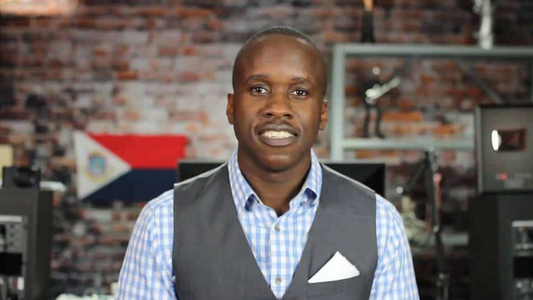

Fitness at Any Size: Triathlete Maria Sawczuk
Triathlete Maria Sawczuk has overcome lifelong difficulties with weight and progress plateaus to succeed as an Athena triathlete.
“I was always the chunky kid. The hefty kid,” Sawczuk said.
She has tried different avenues to lose weight and improve her health, including low-carb diets and Wegovy. Everything worked for a time, but then she would hit a plateau. Then, she started focusing on her fitness through multisport, which shifted her perspective. She has been a triathlete for ten years.
“I don’t let my weight get in the way of athletic performance,” she said. “Now it's put on the spandex, get out on the bike. It’s definitely changed how I approach weight loss. Now it’s more weight loss not because I want to look better. It’s because I want to be faster on the bike or I want to be able to run without having knee issues.”
Training for Multisport
Training schedules for any endurance athlete is intense, but training for triathlon requires even more tenacity.
Sawczuk’s current focus is aquabike, a swim and bike event. To prepare for her upcoming races, she swims or bikes five days a week for at least an hour.
“Usually a weekend day or two will be a longer [workout],” she said. This is common for endurance athletes who have to have “long” sessions to get ready for the distance of the races.
“I raced my longest distance, which was three-quarters of the Ironman distance on the swim and bike, so it was a 1.8 mile swim and 75 mile bike,” she said.
“My training for that was really significant. I would be swimming two [or] three hours a day. I’d be on my bike for five [or] six hours on the weekends.”
Since starting with aquabike, Sawczuk has been successful; she’s won her age group a few times and taken home a couple of trophies.
She also works weight training into her workout, which helps her increase power and prevents injuries.
Nutrition as a Triathlete
Staying fueled is necessary to all athletes, but particularly triathletes who are maintaining a high level of activity for several hours.
To lose weight, Sawczuk had tried low-carb diets, but the diet directly opposed her fitness goals since athletes of all sizes require carbohydrates to maintain energy levels and keep moving.
“Even when I had a nice, good eating plan where I cut out the carbs, I found I couldn’t work out properly because I needed the carbs.”
After lacking energy and not being able to complete workouts, she aligned her nutrition goals with her fitness goals.
Now, Sawczuk works with a nutritionist to ensure she is prepared for her events.
“I’ve started adding carbs back and when I’m on an eating plan, I try to incorporate carbs on days that I have workouts, and especially on days where I have significant workouts as opposed to just an easy bike.”
She also works with a nutritionist on what to eat during half Ironman and Ironman distance races, where she might be racing for six or more hours.
When not working out, Sawczuk said she tries to eat clean and keep an eye on her macros, paying special attention to protein goals.
Data as a Motivator
For Sawczuk, data and metrics are major motivators to keep her going with her fitness goals.
She started using ZOZOFIT in December 2023 while in the midst of an eight-month plateau where the number on the scale just wouldn’t decrease.
“[ZOZOFIT] was really great because even though my body weight wasn’t moving, the ZOZOFIT showed me I was still having some positive changes. It really made me feel good about [my progress].”
Athletes, especially larger athletes, often find themselves at a crossroads with their fitness and weight loss goals because the scale doesn’t tell the whole story. Increasing fitness levels will change your body composition and reduce your body fat percentage, which is exactly what Sawczuk saw with her progress.
“I did the second scan and had lost inches all down the line and had [a drop in] body fat percentage as well. It was really exciting, even though my weight didn’t [change].”
To see her progress, Sawczuk utilizes the side-by-side comparison and ColorMetric features.
She also started using ZOZOFIT’s goal setting feature so she can stay on track with her body composition and body fat percentage goals.
“I like the data because the data keeps me motivated,” she said. For her, this is true of both the ZOZOFIT data and her triathlon race data, like national rankings.
“I feel like every year I get a little bit better. Just having that data point to know that you’re getting better, that there’s progress when sometimes you don’t think there is… that’s the motivation.”

![zf-w-[168px] zf-h-[40px]](http://zozofit.com/cdn/shop/t/15/assets/logo-desktop.png?v=117713855448369080381753069598)


